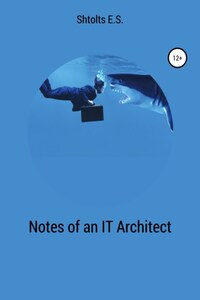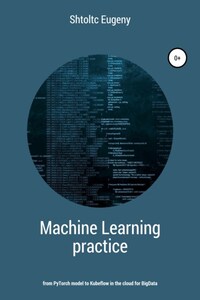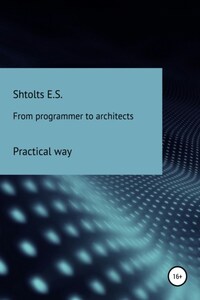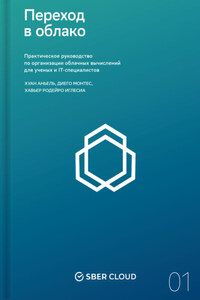In this book, we will cover the following sections:
* Architecture;
* Solution Architect and microservices;
* View from the height of the business and business architect;
* Corporate architecture;
* Service architect;
* Use in the management of ITIL 4, PMBOOK and COBIT 5;
* Application architect and design patterns;
* DevOps as a component of an architect;
* Architect and basic patterns;
* Corporate data bus;
* Service Oriented Architect;
* Applications in the cloud;
* Infrastructure for the cloud;
* Edge scaling sizes: data centers, cluster, sizes;
* Architect in business processes;
* Waterfall;
* Scrum;
* Kanban;
* Varieties of teams;
* Selection and growth of personnel;
* TeamLead & leading specialist;
* Virtualization;
* Features of development in Windows – Vagrant;
* Containerization;
* Podman and Docker;
* Stacks;
* Languages and paradigms of programming;
* Front-end: single page web applications.
Now the author holds the position of the Chief Architect of Cloud Native Competencies of the Architecture Department of Sberbank Competence. In this position, the author is engaged in research on the implementation and use of technologies that are already or very soon will become the de facto standard, such as servoless theologies and CloudEvents, and with which he shares with the reader. Also, the author, on a regular basis, evaluates existing systems and those planned for implementation in accordance with their modern standards, for example, CloudNative. About this, in the book, the author talks about the scope and guides the reader to implement them. The author pays special attention to this – finding practical solutions in the formed ecosystem that make life easier for both developers and the support service, while the customer remains interested in them. Employees gain knowledge of current technologies in which problems that are present in obsolete and retired ones have already been solved. This solves the problems of both developers and customers. The author does not dwell on any one technology that he has come across, but gives universal technologies in a systemic and practical form, or introduces the reader to the set of used ones, as the author gives the code in the languages of Go, NodeJS, PHP and Java depending on the relevance. more than 10 years of experience in various fields and in various positions allows us to highlight the relevant and popular ones, as well as undergoing training at Yandex, Sberbank EPAM and receiving many specialized certificates. The author has collected experience, both in domestic and foreign companies, both in startups and in enteprase, both creating his own co-commercial products and working in grocery development and outsourcing, producing streaming products, as well as complex proprietary software solutions… In addition to typing systems and practical help, the author gives an organizational minimum. Internally, the vision will enable work experience in various technical positions such as back-end and full-stack developer, DevOps and Team-Lead, including Software Architect. Experience of work not only as a hired employee allows us to take a look at the organizational level. The author worked both as a hired employee, but also as an individual entrepreneur and an official partner of a large supplier of mass software in Russia and the CIS (Bitrix Technology Partner), making and assembling customized and scalable solutions.
GOST R 57100-2016 (docs.cntd.ru/document/1200139542) based on the international standard ISO / IEC / IEEE 42010 defines architecture as "Basic concepts and properties of a system in the environment, embodied in its elements, relationships and specific principles of its project and development". There are quite a few varieties of it, but we will highlight the main ones in terms of abstraction level: Application Architecture, Software Architecture, Solution Architecture and Enterprise architecture. An application architect develops the architecture of the application itself using design patterns and task allocation, and often combines his role with the role of Team-Lead or Lead Developer of Responsible Components (Tex-Lead). Software Architect does the same thing as an application architect, but works with multiple teams to add unification to the technologies they use. This position is often in demand in outsourcing, where there are many projects and there is an opportunity to take the load off Team-Lead so that they communicate more with customers and the team. This position is characterized by requirements for a vacancy in knowledge of the programming language and the main stack used on projects. In such a situation, the architect is limited in his choice of technologies and hiring new employees. Since its inception in 1959, the architect has dealt with the decomposition of the system, the distribution of parts among the developers, and was responsible for the subsequent integration of the developed components into the originally required system. Now the situation has been simplified with the advent of microservices.














